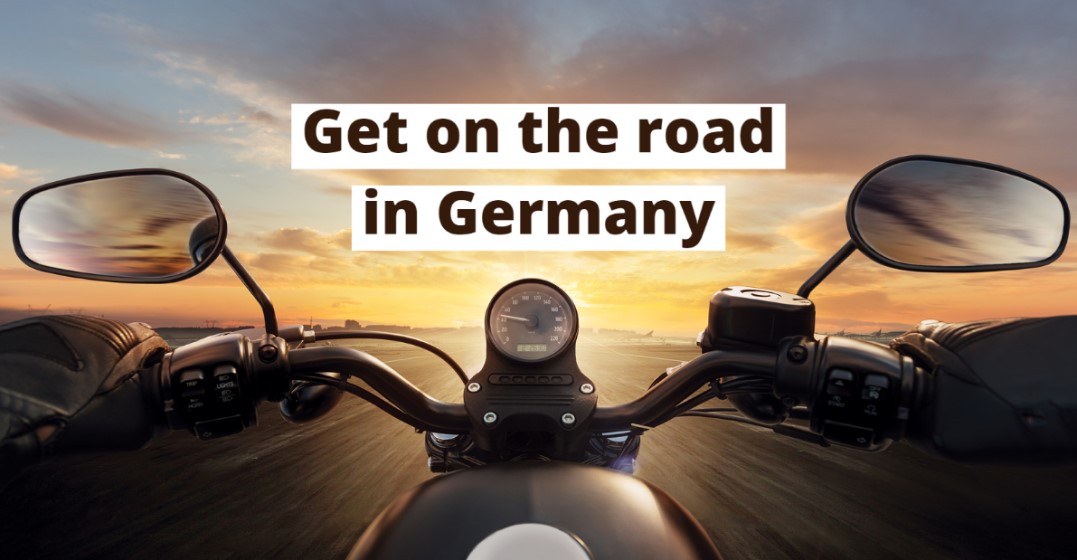by Jakob Straub
Updated on October 8, 2024
Bikers are one of a kind, and many foreign nationals coming to Germany wouldn’t want to miss their motorcycle for anything. From north to south, Germany has a lot of popular motorcycling routes. Whether you enjoy the need for speed or scenic touring, here’s how to obtain a motorcycle driving licence in Germany.



Driving in Germany is heavily regulated, but that’s no surprise in a country of many laws and rules. There is no universal driving licence, but several classes for different types of vehicles, including various categories of motorcycles. There is the AM motorcycle driving licence, A1, A2 and A in Germany. In some cases, you can also convert your licence into a German licence.
Since the end of 2019, you can also ride motorcycles of this class with a regular German driving licence for cars (class B), given that you’re at least 25 years old, have had your driving licence for at least 5 years, and commit to 13.5 hours of theoretical and practical driver’s education. This kind of permit is only valid within Germany.
This is the “regular” class for a motorcycle licence in Germany and the type you need to get for a typical racing or touring machine.
We’ll walk you through the process step by step.
Germany does accept a range of driving licences from foreign countries or allows you to trade yours in for a German licence, including motorcycle driving licences. Even a foreign driving licence for cars is beneficial, so convert yours if necessary. You don’t need to wait for this to go through to go to driving school.
To get a class A motorcycle licence in Germany, you’ll need to take classes at a driving school. In bigger cities such as Berlin, you might find one with classes in English also. Otherwise you have to study in German and supplement the classes with additional English material available.
There is a minimum of theoretical and practical classes you have to take. You can always take more practise hours at your own cost. If you already have the class B licence, your number of theory classes reduces by half from 12 to 6.
For the practical driving lessons, you need your own motorcycle equipment. In theory, you don’t need to wait to finish the theoretical exam until you start with the practice hours, but every driving school handles things differently. You will also need to pass a vision test and a first aid class of a certain length. Driving schools commonly recommend places for this.



To be eligible for the theoretical exam, you need a permission from the Bürgeramt. Since it will take you a while to get an appointment and another while to get the permit, it’s best to get started as early as possible. For the actual appointment, you’ll need:
The permit is valid for 12 months and allows you to take the exam at a TÜV or Dekra office of your choice. The test will have ten general and ten motorcycle questions and you can take it in English also.
The test features a set of questions from close to a thousand in total. The good news is that the test questions are the very same as the course material, but the bad news is that they’re hard and inane. Your best bet is to learn everything by rote. If you miss more than two questions, you’ll fail.
Once you have completed sufficient driving hours, which includes overland trips, driving at night and on the Autobahn, your driving school can schedule the practical exam. You have to perform a few maneuvres and demonstrate your ability for city and highway driving.
If you pass, you’ll get a temporary driving licence. When your regular licence is ready, you can pick it up or have it mailed to you. The German motorcycle driving licence is valid in all EU countries.
The German class A licence will cost you roughly between € 1.300 and € 1.700. This includes the following:
It does not include the cost for required motorcycle gear – and the price of your motorcycle or the insurance you need to get for it!



